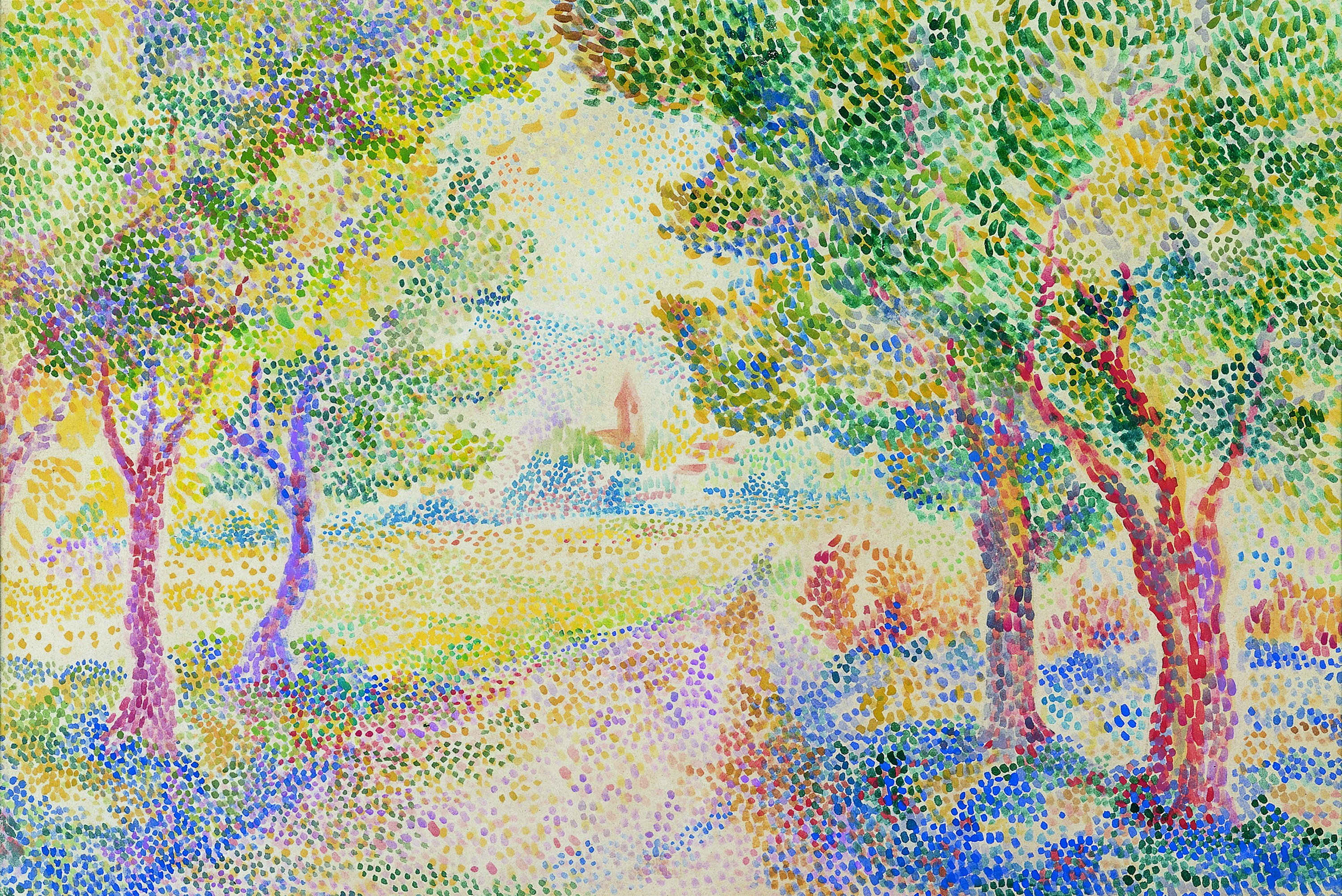Village and Bell-Tower
Like many of hippolyte Petitjean's works, his watercolours carry no indication of date and place. Although they are very close in style to those painted by both Pissarros- the father and the son-in the years 1866-1890, according to Robert Herbert, the art historian of neo-Impressionism, they were in fact painted in the last years of his life, from 1912 onwards, when the artist had moved back to the neo-impressionist technique he had abandoned at the turn of the century. These watercolours, which constitute the most interesting part of his work, have been highly sought- after by art collectors ever since they were revealed to the public in the exhibition organised in 1955 with the support of the artist's daughter in the gallery of the "Institut de Paris", which was followed by a second exhibition at the David D. Findlay gallery in New York in 1959.
Throughout his career, Petitjean systematically moved back and forth from neo-Impressionism to a more academically inspired art, in the style of Puvis de Chavannes. This attempt to reconcile tradition and modernity found its best expression in his pure and thoughfully constructed landscapes, in which the painter abandons all allegorical or mythological allusion. Here he uses very freely the technique of colour division, applying the paint rapidly with small brushstrokes, in a loose network which lets the white paper show though. Thus, he sets off the brightness of the colours, without tarnishing them by superimposing them. In this way, Petitjean achieves a very decorative, fairly bright effect, but very far from that obtained with a more rigorous use of colour division according to the strict principes of the divisionist method, as was understood by Paul Signac and Henri-Edmond Cross.
Here, there is very little drawing, few outlines. The artist depicts the scene in large masses: the water, the sky and the tree in the middle, framed on either side by the dense vegetation of the verges. He clearly enjoys opposing the density of the boat and the vegetation-represented with more intense colours and denser touches-to the lighter and more spaced out strokes of the water and the sky. He then concentrates on describing the overlapping of the colours, particularly the bright sunny yellow which spreads into the blue of the sky. Petitjean also avoids marking too neatly the lines which separate the vegetation from its reflection, thus creating a poetical landscape, more evocative than precisely described, and is more interested in depicting the effect of the light-probably that of the end to the day when the warm and coloured shadows become longer and blur the perception of the limits which separate reality from its reflections, and the object from the shadow it projects.
Painted in a style very similar to the previous work, again this watercolour has no indication of place or date. It might be a landscape of the Ile-de-France, but the massive and squat Romanesque bell-tower could be that of the village of Donzy-le-Perthuis, near Mâcon, in the department of Saône et Loire, often depicted by the artist. In fact, Petitjean regularly went back to his native region, and left many watercolours of Donzy-le-Perthuis similar to this one. Curiously, the bell-tower at the centre of the composition is the only object which has not been painted in divided strokes. This makes it appear as an isolated element, and may suggest that the artist was reluctant to use, for the solid character of a building, a technique he applied more willingly to evoke fluid elements, such as vegetation or nature in general.
Here we find again Hippolyte Petitjean's taste for simple and readable compositions. Isolated on a low hill, at the foot of which some houses can be made out, the bell-tower is framed on either side by the trees bordering the road to the village, and is clearly played off against the hills in the background. Again, the artist has simplified the colourful composition by isolating the elements of the landscape in large zones with clearly defined shades: the foliage of the trees and the triangle of the road in the foreground framed by the blue shadows of the trees, then the bright sunny yellow of a wheat field and the paler blue of the hills in the distance. The sinuous lines of the tree trunks and boughs, the more sweeping touches which represent the foliage, introduce a slight movement in this sober and geometrical composition. The dispersion of the small coloured dots creates a general sense of vibration, reinforced by the choice of colours. The light shades, enhanced by some notes of pure colours-yellow, red and blue-which liven up this extremely classic composition, create the illusion of light and movement. Thus, this watercolour embodies the charming art of the shy and modest Petitjean. It shows at the same time his naivety and his spontaneity, his faithfulness to tradition and his over-tempered boldness. It expresses the contradictory inclinations which marked the artist's entire career, dominated by the continuous alternation between two temptations: remaining the admirer of Puvis de Chavannes and choosing a moderate art, or being an artist in search of novelty, sensitive to the modernity of colour as understood by the neo-Impressionist painters.
Marina Ferretti










